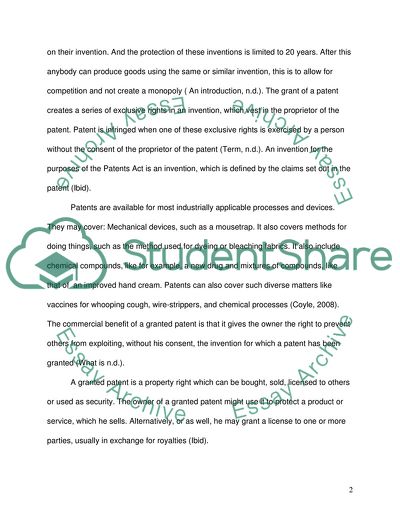Cite this document
(The Patents Act 1977 in the UK Coursework Example | Topics and Well Written Essays - 1750 words - 2, n.d.)
The Patents Act 1977 in the UK Coursework Example | Topics and Well Written Essays - 1750 words - 2. https://studentshare.org/law/1752674-law
The Patents Act 1977 in the UK Coursework Example | Topics and Well Written Essays - 1750 words - 2. https://studentshare.org/law/1752674-law
(The Patents Act 1977 in the UK Coursework Example | Topics and Well Written Essays - 1750 Words - 2)
The Patents Act 1977 in the UK Coursework Example | Topics and Well Written Essays - 1750 Words - 2. https://studentshare.org/law/1752674-law.
The Patents Act 1977 in the UK Coursework Example | Topics and Well Written Essays - 1750 Words - 2. https://studentshare.org/law/1752674-law.
“The Patents Act 1977 in the UK Coursework Example | Topics and Well Written Essays - 1750 Words - 2”. https://studentshare.org/law/1752674-law.


